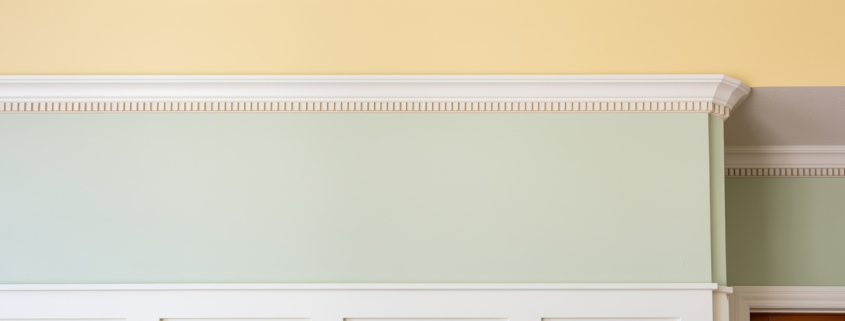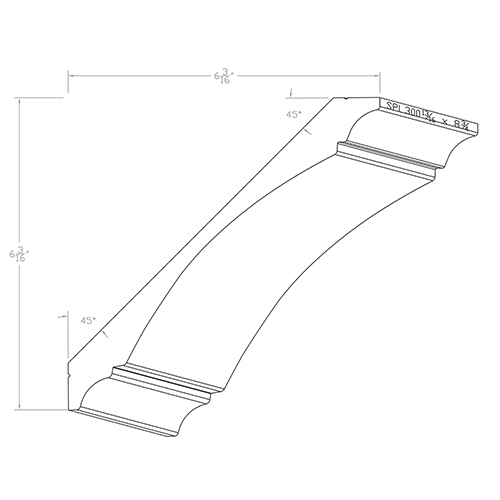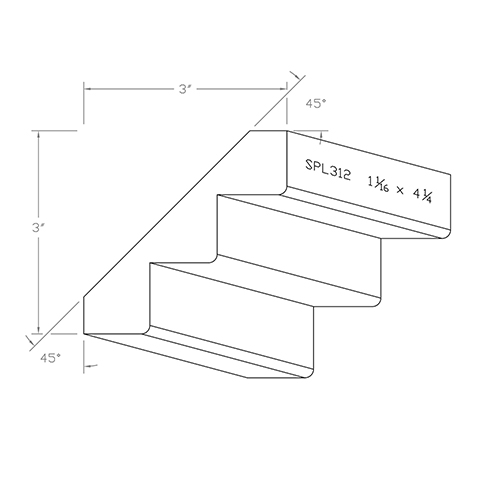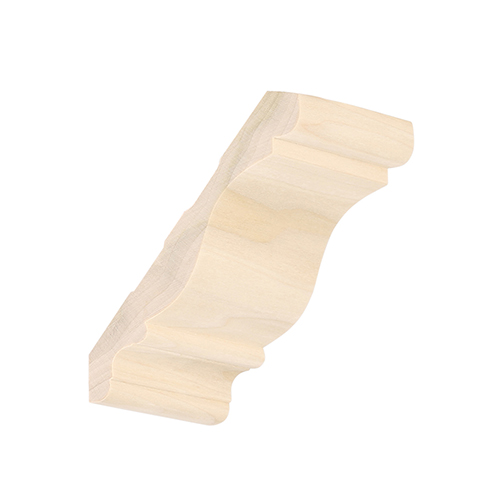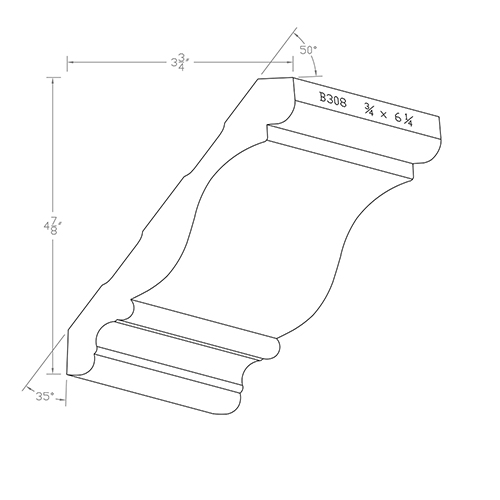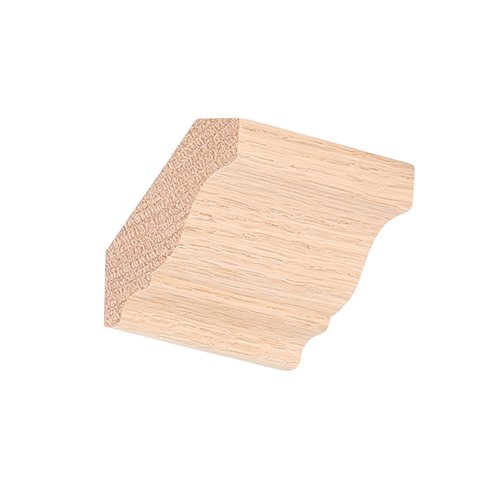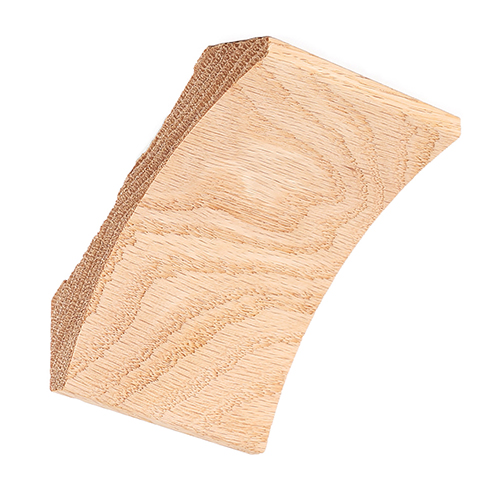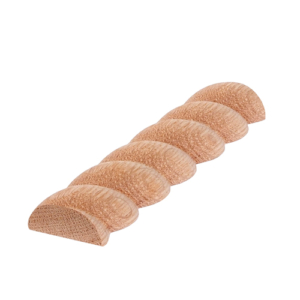Millwork Knowledge: Get to Know Wood Crown Mouldings
Are you looking for an easy way to freshen up your interior design? Adding crown moulding profiles to your favorite spaces might be just what you’re looking for.
With a little bit of know-how, installing an architectural design element like crown moulding can prove to be a nice DIY project; but if your walls are out of square (or if you’re new to the DIY world), it might be best to bring in a pro.
Of course, you can always opt for a variety of updates that include different millwork and moulding options, but crown moulding is at the top of the list when it comes to taking the look of your home to the next level.
For anyone who is not familiar, crown moulding is the horizontal trim that typically covers the point where the ceiling and wall meet. That said, it can also be used as part of other interior design elements: as part of a door header or cornice, at the top of a pilaster and even as a component for custom mantels or shelves.
But, for our purposes, we’re going to go in-depth on using it as the finishing touch in your favorite room(s). Let’s get to it!
The Basics on Crown Moulding Profiles

Crown mouldings come in thousands of shapes and sizes (aka crown moulding profiles). Some traditional profiles even date all the way back to ancient Rome! Dentil crown mouldings and cove mouldings are classic options that remain popular among homeowners today.
Making a decision is really based on style and taste. Before you purchase and start making some sawdust, it’s important to have an understanding of your home’s design style and what you’re trying to achieve. Custom crown can also be a great choice if you want to add some unique flair to your home, but you’ll need to make sure you work with an experienced manufacturer and finish carpenter.
Here’s some inspiration for crown moulding design styles.
Colonial Crown Moulding
Contemporary Crown Moulding
Traditional Crown Moulding
Victorian Crown Moulding
In the end, it’s all up to you! Common profiles include dentils, bead and curve, cove and decorative designs (inclusive of elements like rope mouldings.
Crown Moulding Materials
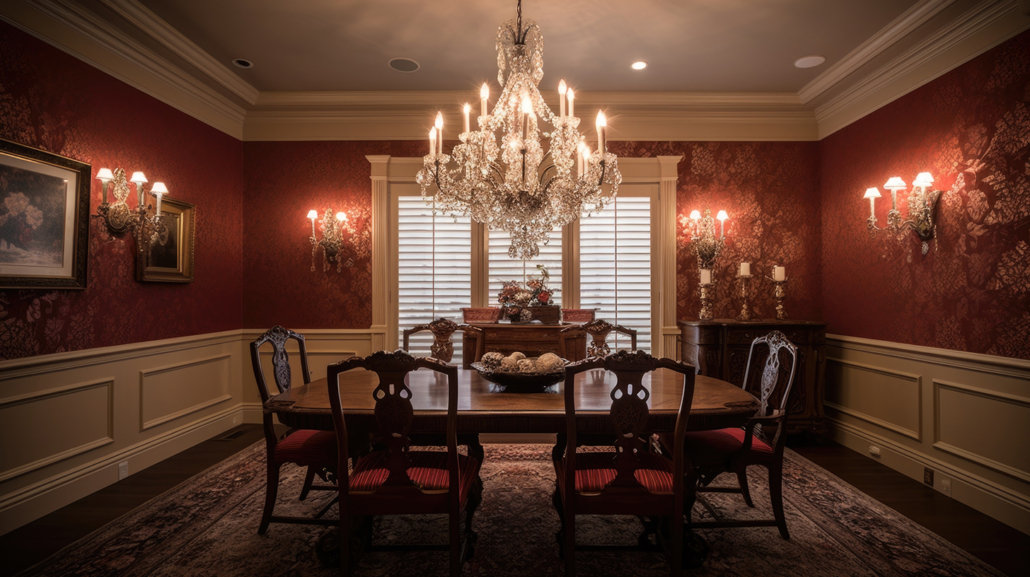
Crown moulding doesn’t only come in different profiles – it also comes in different materials. The most common are solid wood and MDF.
Incorporating real wood into your interior design is irreplaceable – not just because it’s durable and uniquely beautiful. It also naturally boosts mood and is fully customizable.
MDF, by comparison, can (almost) mimic the look of painted woods like poplar, and it is a lower-cost option. However, with the lower cost comes some drawbacks. It’s less durable, flimsy and harder to install. This is important to keep in mind, especially if you’re tackling this DIY project on your own.
Simple Crown Moulding vs. Built-Up Crown Moulding
Now we’re getting down to the nitty-gritty!
As you can see in the pictures above, crown moulding is often made from one single piece of solid wood. (Or, if you’re shopping at Baird Brothers, you can also choose from primed, finger jointed poplar. This is a great option if you are planning to paint your crown and want to save a little bit of money doing it!)
That said, sometimes homeowners are looking for an ornate, substantial design, and that’s where build-ups come in! A simple explanation of this process is that multiple mouldings are used to create one single architectural element. Often, that can include baseboard, crown and panel moulding profiles.
The baseboard is attached upside down to the wall. Then, crown moulding is applied (attaching to the baseboard and the ceiling). Last but not least, the panel moulding is attached to the ceiling and butts up to the top of the crown.
This process, of course, can vary depending on the desired look. In the end though, a crown build-up application can really make a good room look great!
How Do You Match Existing Crown Mouldings?
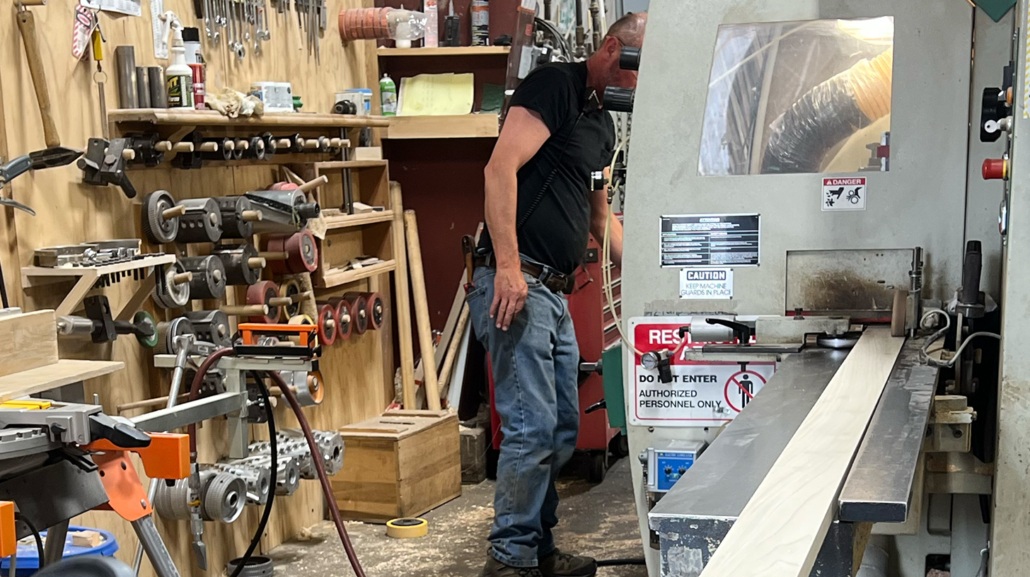
So, what happens if you have existing crown moulding but want to restructure a room or add a built-in? You’re probably worried that you’ll have to replace the crown throughout the entire room to accommodate the change in layout.
But, that’s not necessarily the case! Some manufacturers can match existing profiles – all they need is a sample to work off of. In some cases, they can also manufacture custom profiles and send out 3D-printed samples so that you can (literally) see before you buy!
By manufacturing our own knife stock at Baird Brothers, we produce some of the best crown moulding products on the market in the United States. Not only do we carry popular stock profiles but we can also create custom moulding profiles and match anything in your home.
Join Steve Stack as he talks to Roger Ewing in our Tooling Department and Bill Moss, our Moulder Technician, and learn all about the care we give to our mouldings.
Tips for Selecting the Right Crown Moulding
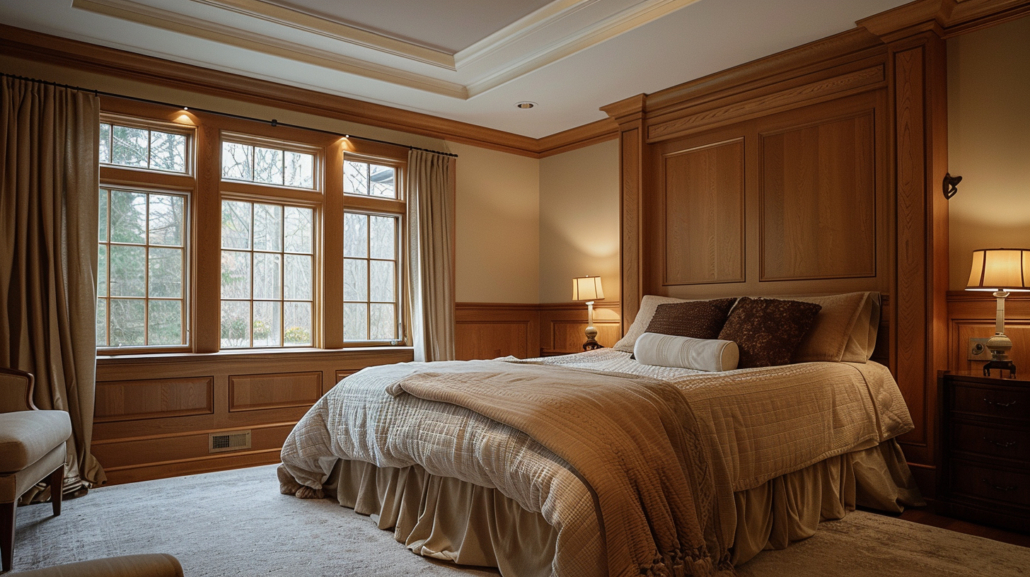
When selecting your crown moulding, one of the most important things to consider is how it matches other design elements (like trim, etc). Check your baseboard, backband and any wainscoting or mantels, then select a crown moulding that complements them in look and size.
If all the trim in your living room is painted white, stained wood crown moulding might throw off the look. But, painted crown that blends with the ceiling color can go seamlessly with stained casing and baseboard (whether it’s red oak, cherry or walnut!).
Tip for 2024 Design Trends and Beyond:
High-gloss paint for trim and crown is on the rise. Be on the lookout for it, because it can add a lot of color and character to modern (and even classic) design!
However, if you go this route, be sure that any wood products used are made with a high number of knife marks per inch. The more knife marks the smoother the product, which is especially important when using non-matte paints.
Find the Perfect Fit For Your Crown Moulding
Ready to freshen up your home? Then shop our online store for stock crown moulding profiles in maple, cherry, red oak, poplar and more. Or, if you want something custom, simply reach out to our team members! Not only do we have endless options but we’re also ready to help you design and choose your perfect product.
Not sure where to start? Ask us! Not sure how to make your drawings come to life? Ask us! Wondering how to match existing crown moulding profiles that you’ve already fallen in love with? Ask us! We’re here to make your dream home a reality!

